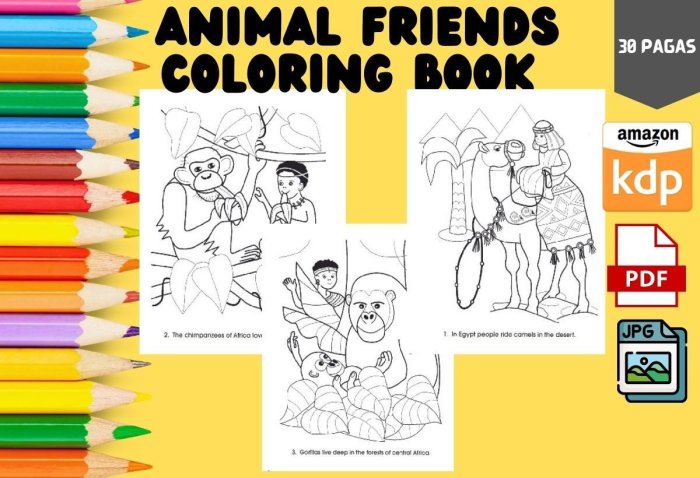Crayola Animal Friends Coloring Book A Wildly Fun Adventure
Educational Aspects: Crayola Animal Friends Coloring Book

The Crayola Animal Friends coloring book offers a wealth of educational benefits beyond simple entertainment. It provides a fun and engaging platform for children to develop crucial skills in a variety of areas, fostering cognitive, creative, and physical development simultaneously. The vibrant illustrations and diverse animal characters capture children’s imaginations, motivating them to participate actively in the learning process.The coloring book’s design actively promotes creativity and imagination.
Children are not simply replicating pre-existing images; they are actively interpreting and expressing themselves through color choices, shading techniques, and the addition of their own unique details. This freedom of expression allows for the development of individual artistic styles and fosters confidence in their creative abilities. For example, a child might choose vibrant, bold colors to depict a playful monkey, contrasting with softer pastels for a serene-looking elephant, reflecting their own interpretation of each animal’s personality.
Fine Motor Skill Development, Crayola animal friends coloring book
Coloring within the lines, shading different areas, and controlling the pressure applied to the crayon all contribute to the enhancement of fine motor skills. These skills are essential for handwriting, drawing, and various other everyday tasks. The act of carefully coloring intricate details, such as the stripes on a tiger or the scales on a fish, helps children develop dexterity, hand-eye coordination, and precision in their movements.
This translates to improved control over pencils and other writing instruments later on, facilitating smoother handwriting and better overall writing skills.
Age-Appropriate Learning Activities
A series of supplementary activities can complement the coloring book, extending the learning experience and tailoring it to different age groups.
For younger children (ages 3-5), simple activities focusing on color recognition and naming can be incorporated. For instance, after coloring a page, children can be asked to identify and name the colors they used, strengthening their vocabulary and color perception. They can also be encouraged to create simple stories about the animals they have colored.
Older children (ages 6-8) can engage in more complex activities. These could include creating detailed animal fact sheets based on the animals in the coloring book, researching their habitats and diets, or even drawing their own animal friends inspired by the book’s illustrations. This integrates the coloring activity with research and writing skills, promoting a more holistic learning experience. They might also explore different shading techniques to add depth and dimension to their drawings, enhancing their artistic skills.
Yo, Crayola Animal Friends coloring book is totally rad, right? But if you’re feeling something a bit more, like, *princessy*, check out these anime princess peach coloring pages – they’re fire! Then, after you’ve unleashed your inner artist on Peach, get back to those adorable Crayola animals – it’s a total vibe switch!
